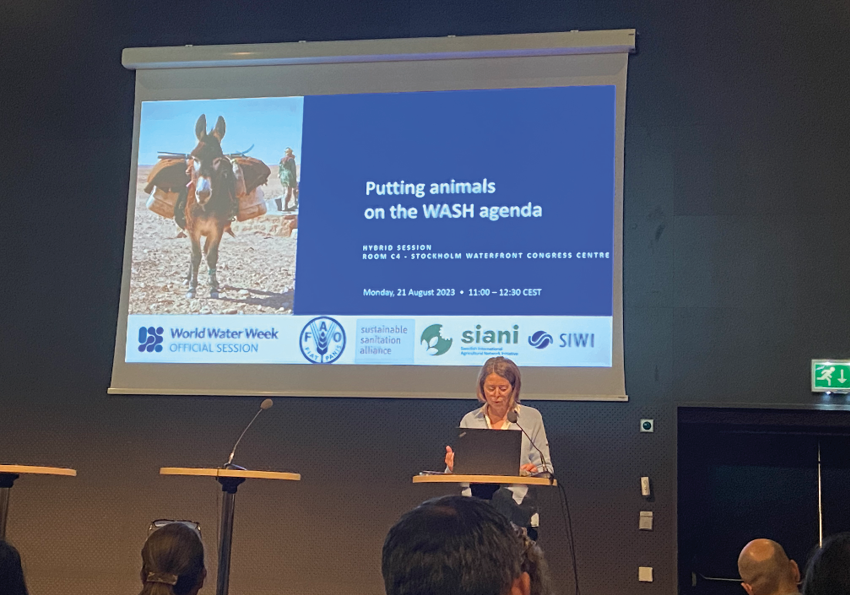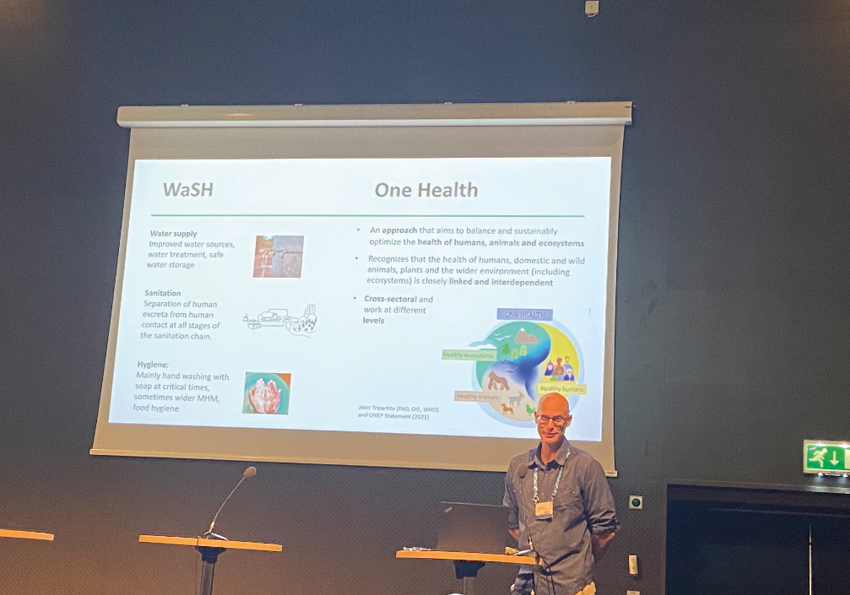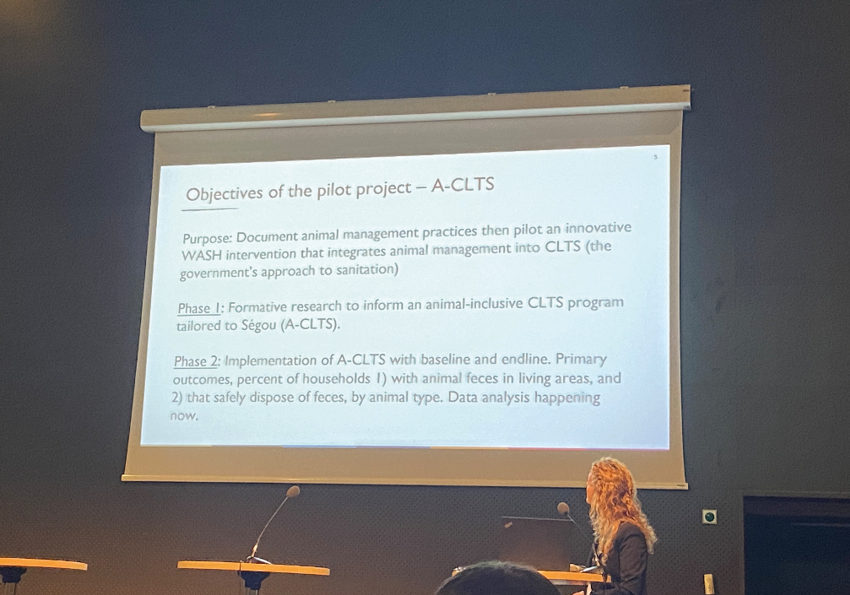With the world running out of fresh water, it is more vital than ever to use this resource smartly to strive for more sustainable food systems. While clean and safe water is essential for human, animal and ecosystem health, contaminated water and poor sanitation must be addressed as linked to transmission of waterborne diseases. As such, One Health recognises that “the health of humans, domestic and wild animals, plants and the wider environment (including ecosystems) are linked and interdependent”.
Access to safe WaSH (Water, Sanitation and Hygiene) is crucial and a cost-effective health intervention that saves lives. However, adopting an integrated WaSH approach is necessary to expand its application to animal exposure. As such, as part of this year’s World Water Week, organised by SIWI in Stockholm, the session “Putting animals on the WaSH agenda” focused on the shared risks and opportunities at the animal, human and water interfaces.
The session investigated the ways to enhance the connection between animal health and WaSH measures. How can animals contribute to WaSH, and what are the various trade-offs to consider from different viewpoints concerning health, food production, biodiversity, animal welfare, security, and humanitarian aspects?
A harmful proximity between humans and animals
As humans and animals are increasingly living in close proximity to each other, in many places people and animals share the same water resource. However, this closeness can turn out hazardous and water can worsen the phenomenon. As acknowledged by Carolina Probst, Division for pandemic prevention and preparedness, One Health, Federal Ministry for Economic Cooperation and Development, more than 75% of all newly emerging infectious diseases in humans are issued from animals. So, are we doing enough?
“It is an urgent call to action to put a spotlight on animal health in the context of one health and especially in the context of WASH” – Dr. Carolina Probst.
In Africa and Southeast Asia, more than 50% of households keep domestic livestock, and additionally, two-thirds of all animal faeces are generated at the household level and must be managed accordingly, highlighted Linus Dagerskog, Research fellow, SIANI at SEI. Moreover, the animal sector is one of the fastest growing agricultural sectors in low- and middle-income countries, emphasising the urgency of the issue, outlined Sasha Koo-Oshima, Deputy Division Director – Lead on One Water One Health, FAO.
Unlike many cities, the animal sector often lacks adequate wastewater disposal facilities, particularly in large and medium-sized livestock husbandry, resulting in polluted water released into the environment. Thus, water can be a vector for spreading zoonoses diseases in the environment and ultimately to humans. Women are often more prone to infection and exposed to the risk because of their close interactions with animals, pointed out Michel Dione, Senior Scientist – Animal Health Animal and Human Health Program, International Livestock Research Institute.
Moreover, antibiotics used in livestock, fish and crops will also end up in the environment and be transported by water. Thereby, this excessive use of antibiotics leads to antimicrobial resistance and pollution of the environment, expressed Sasha Koo-Oshima.
To combat waterborne diseases, antimicrobial resistance and pollution of the environment, it is paramount to recognise the importance of infectious disease prevention and control, including water security, sanitation and hygiene as well as the potential benefits in soil fertility.


